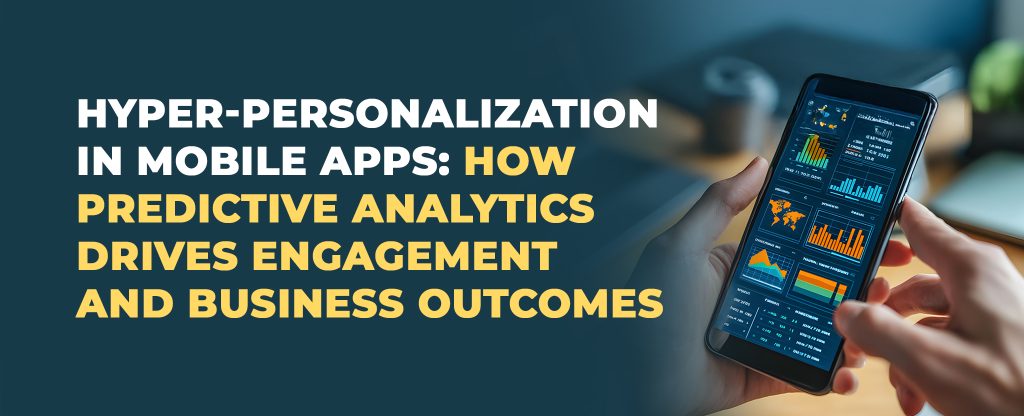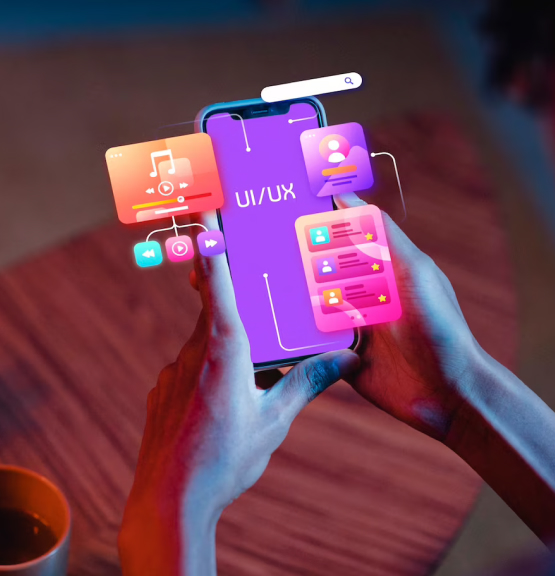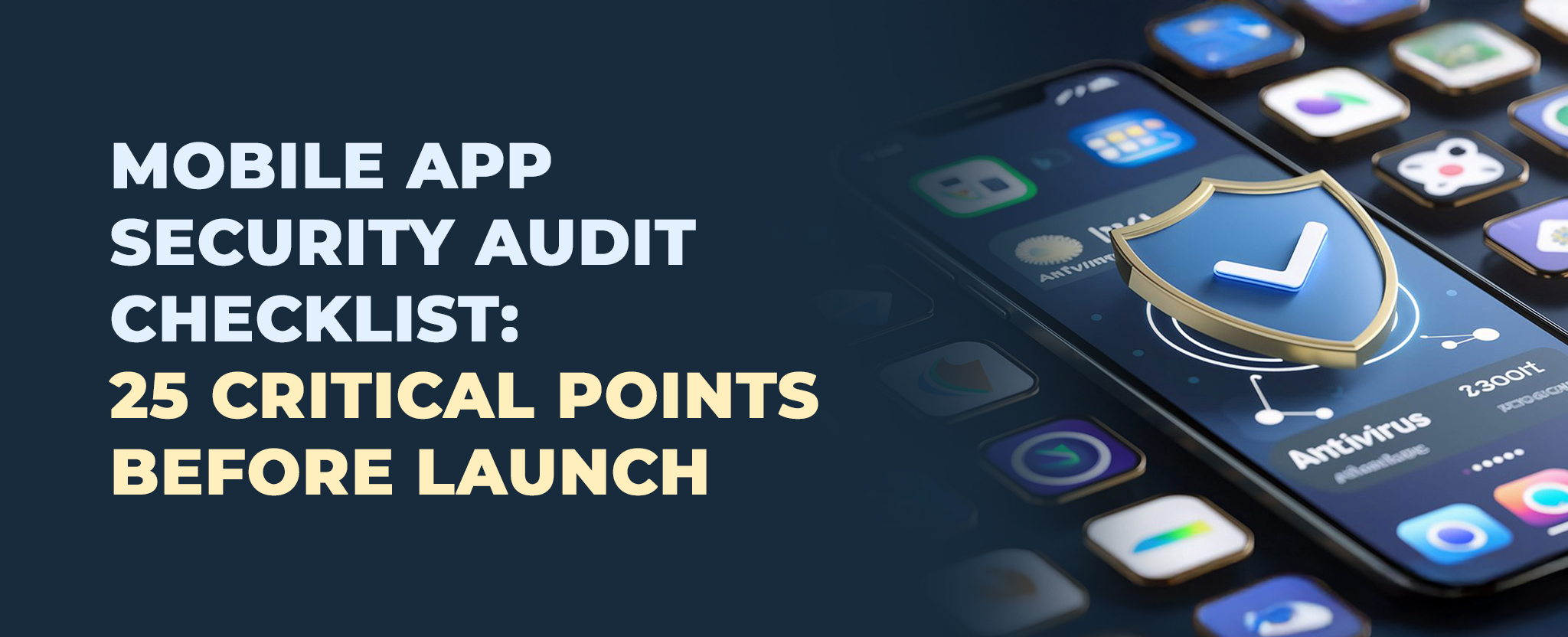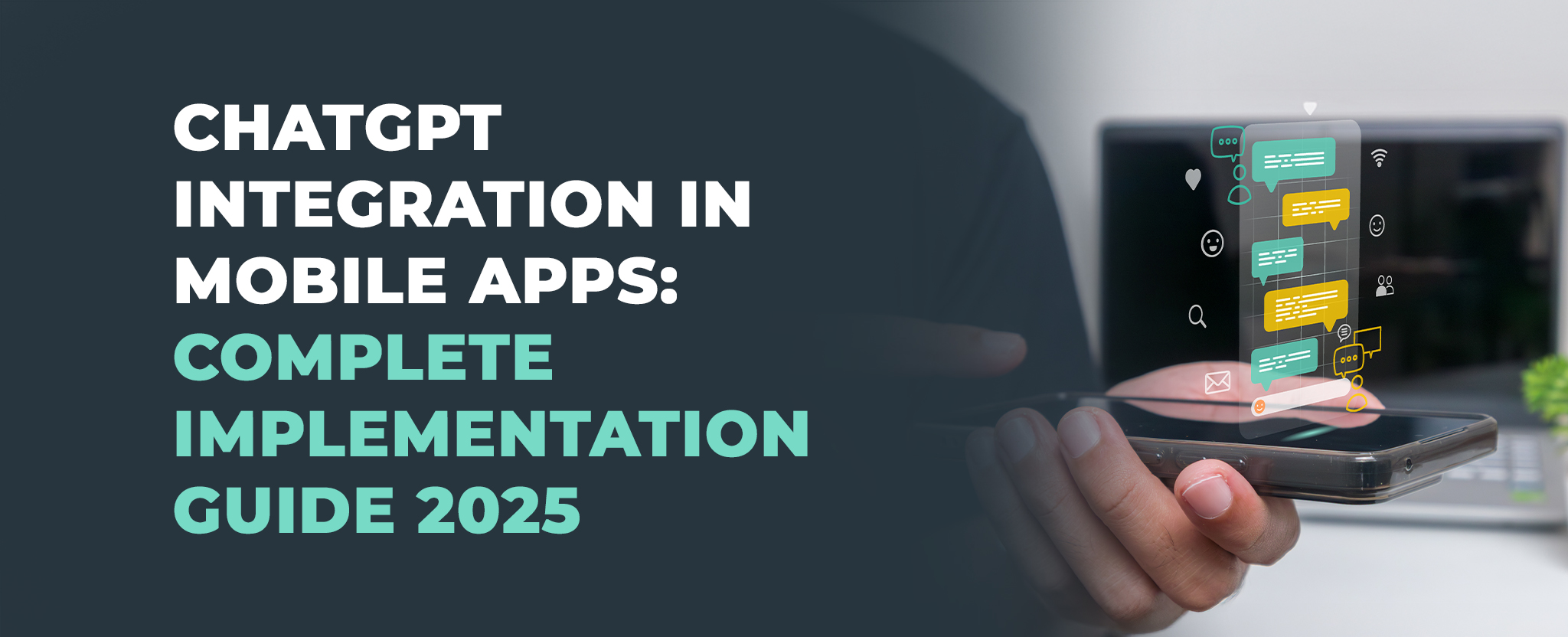Hyper-Personalization in Mobile Apps: How Predictive Analytics Drives Engagement and Business Outcomes
21 Nov 25 


Think about the last time you opened Netflix. The homepage you saw was different from what your friend sees. The recommendations, the thumbnails, even the order of content—all customized for you. Now imagine if every app on your phone worked this way.
That’s exactly what’s happening. Apps are learning who you are, what you want, and when you want it. They’re using your behavior, preferences, and patterns to create experiences built specifically for you. And the results? Starbucks reports that 31% of their U.S. sales now come through their personalized mobile app.
This blog explains how apps use data and analytics to understand users, why it matters for engagement and revenue, and how businesses can implement it effectively.
What Is Hyper-Personalization?
Traditional personalization is simple: using your name in an email or reminding you about items left in your shopping cart. Hyper-personalization goes much deeper.
It combines three types of information:
Your behavior: What you click, how long you stay on pages, what you buy, what you ignore, and how you navigate through the app.
Your situation: Where you are, what time it is, what device you’re using, and even factors like weather or your phone’s battery level.
Your profile: Your age, location, past purchases, and stated preferences.
Apps analyze this information in real-time to predict what you’ll want next and adjust accordingly. A fitness app might notice you usually exercise at 6 AM on weekdays and automatically prepare your workout plan at 5:45 AM. A shopping app might show you winter coats when the temperature drops in your area, even if you haven’t searched for them yet.
The difference is simple: regular personalization reacts to what you do; hyper-personalization anticipates what you’ll do next.
How Predictive Analytics Works
Behind every personalized app experience is a system analyzing data to make predictions. Here’s how it works:
Pattern Recognition: Machine learning algorithms study millions of user actions to find patterns. They learn that people who buy running shoes often look at fitness trackers next, or that users who watch action movies on Friday nights prefer comedies on Sunday afternoons.
Behavior Prediction: Time series models look at your history to forecast your future actions. They track when you’re most active, what triggers you to make purchases, and when you’re likely to stop using the app.
Smart Recommendations: Recommendation engines compare your behavior with similar users. If people with similar tastes to yours loved a particular product or content, the app assumes you might too. This is how Netflix knows what show to suggest and how Amazon knows what product you might need.
Context Awareness: Modern apps don’t just know what you like—they know when and where you like it. They track signals like your battery level (avoiding heavy notifications when your battery is low), your location (showing nearby restaurants at lunchtime), and your usage patterns (understanding if you prefer morning or evening engagement).
Also read Leveraging AI for Smarter Mobile App Development: Optimizing Performance and User Engagement
Measuring What Matters
How do you know if personalization is working? These metrics tell the story:
User Activity: Daily and monthly active users show how many people use your app regularly. The ratio between them (called the stickiness ratio) reveals how habit-forming your app is. A high ratio means users come back often.
Session Quality: Track how many pages users view in each session and how long they stay. Deeper, longer sessions mean users find value in your app. If sessions are shallow and brief, personalization isn’t working.
Retention: What percentage of users return after one day? After one week? After one month? Since 73% of users expect apps to understand their individual needs, retention directly reflects how well you’re delivering personalized value.
Conversion: How often do users complete desired actions—making purchases, subscribing, sharing content, or completing profiles? Personalized experiences typically increase conversion rates as users see more relevant options.
Churn Prediction: Advanced analytics can identify users likely to leave before they actually do, based on declining engagement, changes in usage patterns, or negative sentiment. This allows apps to intervene with targeted offers or features.
Real Examples Across Industries
Shopping Apps: Amazon personalizes every product listing based on your browsing and purchase history. One retailer saw a 15% increase in average order value after implementing product recommendations based on user behavior. The app learned which products to show each customer and when to show them.
Fitness Apps: MyFitnessPal creates customized meal plans and workout routines based on your goals, current fitness level, and past activity. Apps with AI coaching features report significant increases in daily active users because the experience feels personally tailored rather than generic.
Banking Apps: Financial apps analyze your spending patterns to offer relevant products—suggesting savings plans when you have excess funds or credit options when needed. They detect unusual transactions to prevent fraud and personalize investment recommendations based on your risk tolerance and financial goals.
Streaming Services: Spotify creates personalized playlists by analyzing your listening history, time of day preferences, and even your mood based on song choices. Netflix personalizes not just recommendations but also the artwork shown for each show based on what visuals you typically click on.
Also read Top 10 Key Features Every Ecommerce Application Needs in 2025
The Business Impact
The numbers prove personalization drives real business results:
Revenue Growth: Companies implementing hyper-personalization see revenue increases of 5-15%, with top performers achieving up to 40% more revenue. AI-powered campaigns deliver 40% higher ROI compared to generic approaches.
Better Retention: Apps using predictive analytics to personalize experiences boost retention rates by up to 30%. When apps feel intuitive and valuable, users have stronger reasons to return daily.
Higher Engagement: 80% of consumers say they’re more likely to do business with companies offering personalized experiences. When content feels relevant, users spend more time in the app and engage with more features.
Improved Conversions: Organizations see conversion rate improvements of up to 15% after implementing AI-driven personalization. Email campaigns using personalization achieve 29% higher open rates than generic messages. Product recommendations increase average order value by 10-15%.
These improvements compound over time as systems learn more about each user and make increasingly accurate predictions.
How to Implement Personalization
Start with Your Data: You need systems to collect, store, and analyze user data. This includes what users do in your app, their profile information, and contextual data like time and location. Customer Data Platforms help organize this information into usable profiles.
Pick Quick Wins: Don’t try to personalize everything at once. Start with high-impact areas like email recommendations or personalized home screens. These often show measurable improvements within weeks.
Learn Progressively: Ask users questions gradually rather than all at once. Stitch Fix uses an initial style quiz to understand preferences, then asks follow-up questions after purchases to refine recommendations. Each interaction teaches you more.
Create Meaningful Segments: Move beyond basic categories like “new users” or “returning users.” Segment by behavior patterns—frequent buyers versus browsers, morning users versus evening users, deal-seekers versus premium buyers. The more specific your segments, the more relevant your personalization.
Test Continuously: Run experiments comparing personalized experiences against generic ones. Measure the impact on key metrics like retention, conversion, and revenue. Use these results to refine your approach.
Build Feedback Loops: Let users rate recommendations, adjust preferences, or opt out of certain features. This feedback improves your algorithms and gives users control over their experience.
What’s Coming Next
Predictive Experiences: Apps will anticipate needs before users express them. Your shopping app might suggest umbrella purchases before rain arrives or recommend meal ingredients based on recipes you viewed last week.
Voice Integration: Natural language processing allows users to interact with apps through conversation rather than taps and swipes. Voice commands already drive one in five searches in health and mobility apps.
Cross-Device Consistency: Your preferences will follow you seamlessly from phone to tablet to computer. Start something on one device, continue on another without missing a beat.
Privacy-First Approaches: Regulations require transparency about data use and explicit user consent. The winning approach processes data on-device when possible, giving users control while still delivering personalized value.
Emotional Understanding: Advanced systems detect user sentiment and tone, responding with appropriate empathy. This takes personalization from transactional (showing the right product) to emotional (understanding how users feel).
Important Considerations
Respect Privacy: Be transparent about what data you collect and why. Give users control over their information. With 76% of consumers frustrated when they don’t receive personalization, the challenge isn’t whether to implement it—it’s how to do so respectfully.
Avoid Creepiness: There’s a line between helpful and intrusive. Users should feel understood, not surveilled. If your app knows too much or makes assumptions that feel invasive, users will lose trust.
Maintain Accuracy: Bad recommendations are worse than no recommendations. If your system consistently misses the mark, users stop trusting it. Focus on accuracy before expanding coverage.
Balance Automation and Control: Let users adjust preferences, reset their profile, or opt out of personalization features. Some users want full automation; others want to maintain control.
Start Small, Scale Carefully: Test with a subset of users before rolling out broadly. Monitor metrics closely and adjust based on results. What works for one segment might not work for another.
The Bottom Line
Hyper-personalization powered by predictive analytics has shifted from optional features to essential foundations. Users expect apps to understand them, anticipate their needs, and deliver relevant experiences.
The technology exists. The data proves it works. Companies using hyper-personalization see measurable improvements in engagement, retention, and revenue.
The apps that succeed will be those that balance sophisticated personalization with genuine respect for user privacy. They’ll predict needs without being intrusive, deliver value without being pushy, and use data to serve users rather than just sell to them.
For businesses, the path forward is clear: implement hyper-personalization thoughtfully, measure results rigorously, and continuously refine based on user feedback. Because in a market where every app competes for attention, the ones that truly understand their users will always come out ahead.
- Agentic AI1
- Android Development3
- Artificial Intelligence31
- Classified App3
- Custom App Development5
- Digital Transformation12
- Doctor Appointment Booking App14
- Dropshipping1
- Ecommerce Apps40
- Education Apps2
- Fintech-Apps37
- Fitness App4
- Flutter4
- Flutter Apps20
- Food Delivery App5
- Grocery App Development1
- Grocery Apps3
- Health Care10
- IoT2
- Loyalty Programs9
- Matrimony Apps1
- Microsoft1
- Mobile App Maintenance2
- Mobile Apps126
- Product Engineering6
- Progressive Web Apps1
- React Native Apps2
- Saas Application2
- Shopify9
- Software Development3
- Taxi Booking Apps7
- Truck Booking App5
- UI UX Design8
- Uncategorized6
- Web App Development1



















Comments